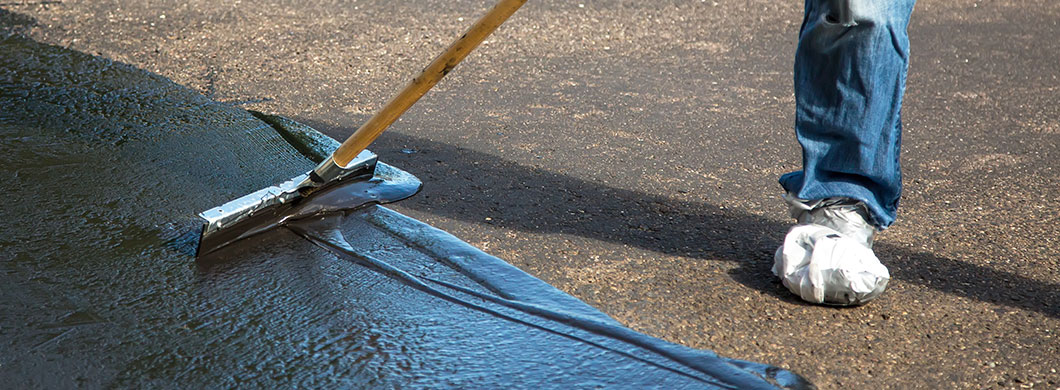Determining the Specific Gravity of Asphalt with the Rice Test
Apr 07, 2020
To gain additional insight into the percentage of air voids present in your HMA sample, you'll need to perform the Rice Test, otherwise known as the theoretical maximum specific gravity of asphalt test. Before diving in, it's important to understand the test's procedures and the different forms of equipment that can (and should) be used to perform the test as efficiently as possible — and with the fewest chances for human error.
What is the Rice Test?
No, this test doesn't actually involve rice (unless you have some for lunch while waiting for your sample to dry). The test was developed by engineer James Rice in order to find the theoretical maximum specific gravity of asphalt, which tells you the percentage of air voids present in a sample and provides a compaction target for the asphalt laydown process. Air voids are a determining factor in the final quality of your asphalt: too low of a percentage can cause pavement problems like shoving and rutting, while too high of a percentage makes pavement more vulnerable to moisture damage and fatigue. When performing the Rice Test for specific gravity of asphalt, refer to the methods outlined in AASHTO T 209 and ASTM D2041, along with any specifications unique to your state or region.
How to Perform the Rice Test
The theoretical maximum specific gravity of asphalt test compares your sample's mass to its volume. In this calculation, density is the mass of a cubic meter of bitumen/HMA at 77°F (25°C) in SI units, and volume is represented by the mass of water displaced by your sample divided by the weight of the water. Specific gravity is the ratio of a sample's mass at 77°F to the mass of an equal volume of 77°F water.
Finding the Theoretical Maximum Specific Gravity of Asphalt: Step by Step
- Step 1: Prepare your sample by heating it to a constant temperature of 275°F (135°C). Once it reaches this temperature, break and separate larger pieces into loose particles. Don't crush them — fines can interfere with your results. Pieces should be around ¼ inch in size.
- Step 2: Heat your water to a constant temperature of 77°F.
- Step 3: Weigh your dry sample and your water.
- Step 4: Add your sample to a container (a glass flask or glass, metal or plastic bowl) or pycnometer, then add water until the top of the sample is covered by at least an inch. Seal the container.
- Step 5: Using a vacuum pump and a mechanical agitator like a Rice Shaker, remove entrapped air from the sample for roughly 15 minutes.
- Step 6: Slowly depressurize your container or pycnometer at a rate of roughly 60mm per second.
- Step 7: If you will be weighing in water, you must suspend your container (with sample and water still inside) in a water bath for 10 minutes. The bath water should also be 77°F. Once 10 minutes have elapsed, record the sample's mass. Alternatively, completely fill the container with 77°F water and record the mass within 10 minutes of depressurization.
- Step 8: If you did not weigh your sample before the test, use the dry-back procedure to find its mass. Spread it out in front of a drying fan and record its weight every 15 minutes until the mass loss between intervals is less than 0.05%.
- Step 9: Use either of the following calculations to determine the theoretical maximum specific gravity of asphalt, represented by Gmm.
- Air Weighing Method (A = sample mass in air, D = mass of container filled with water, E = mass of container with sample and water):
- Gmm = A (A+D-E)
- Water Weighing Method (A = sample mass in air, C = mass of water displaced by sample):
- Gmm = A (A-C)
Equipment Needed to Perform the Rice Test
While many parts of the theoretical maximum specific gravity of asphalt test can be performed manually, the equipment we're suggesting here mechanizes several steps to decrease margin of error and produce more efficient, accurate results.
- Mechanical Rice Shaker: Shakers like the Vibro-Deairator for Rice Test are designed to consistently shake your samples within a vacuum pycnometer.
- Pycnometer with Vacuum Pump: An all-in-one vacuum pycnometer that conveniently holds and deairs your samples.
- Thermometer: For measuring the sample and water temperature.
- Glass, Metal or Plastic Flasks/Containers: Volumetric flasks are a great way to measure and mix samples manually.
- Absolute Pressure Manometer: The Digital Absolute Pressure Manometer is used to measure vacuum levels for the Rice Test and other lab applications.
- Air/Gas Dryer: The Drierite Laboratory Air/Gas Dryer protects vacuum pumps from moisture while deairing asphalt samples.
- Specific Gravity Bench: A Specific Gravity Bench includes everything you need for the Rice Test in one convenient package, including a water tank shelf and suspension area.
- Specific Gravity Water Tanks: A specific gravity water tank is used for suspending and submerging test specimens.
Find Everything You Need for the Rice Test at Certified MTP
No matter which pieces of equipment you need to quickly and accurately calculate the theoretical maximum specific gravity of asphalt, you'll find them all at Certified Material Testing Products. View all our specific gravity test equipment</a style="color: #ec1c24;"> and other asphalt testing supplies today.
Contact Us



